Georgia Ports Authority has been investing big to expand services for vehicle and equipment makers at the port of Brunswick, in partnership with Wallenius Wilhelmsen and TransDevelopment Group, reports Marcus Williams
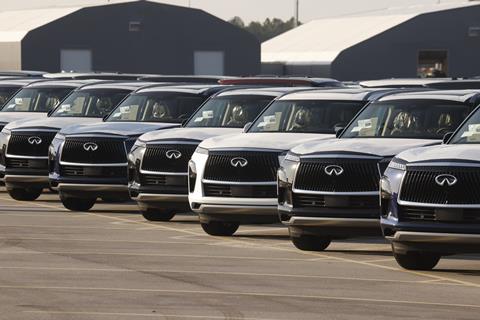
The US port of Brunswick has been increasing its vehicle handling over the last few years and the governing Georgia Ports Authority (GPA) is responding to that growth in business with a massive industrial expansion of vehicle and equipment handling facilities at the Colonel’s Island terminal.
In providing enhanced services for its OEM customers, including Nissan North America, GPA has been working with finished vehicle logistics provider Wallenius Wilhelmsen and terminal infrastructure developer TransDevelopment Group (TDG) to expand operations and upgrade existing terminal facilities.
Total investment of $262m is being spent to develop new infrastructure across approximately 40 hectares (100 acres) of property and make other upgrades.
Earlier this year Bruce Kuzma, senior director of trade development for ocean carrier and non-container sales at GPA, told Automotive Logistics: “We have cleared another 100-acre parcel to move it closer to full buildout. Looking forward, we are expanding our gate infrastructure, terminal roadways, building a new on-terminal rail yard and adding a fourth berth.
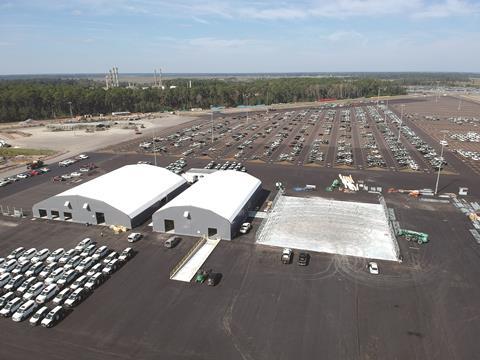
According to GPA, 90% of that work is now complete (as of August, 2024). The overall project accommodates a new vehicle processing centre (VPC) for Nissan North America and the shift of Wallenius Wilhelmsen’s equipment-handling operations from the port of Savannah to Brunswick. It also provides capacity for organic growth from existing customers and new carmakers choosing Brunswick as a location to import and export their products (see boxout of carmakers using Brunswick). Annual capacity at Colonel’s Island is now 1.4m vehicle and machinery units – a 40% increase on last year.
GPA handled an all-time record of 86,577 units of ro-ro cargo at its vehicle terminals in Brunswick port in May, an increase of more than 18,000 units or 26% compared to May 2023. Overall, vehicle processors moved just over 23,000 automotive exports and 54,550 automotive imports in May. It also handled 4,300 units, high and heavy machinery, which more than tripled GPA’s monthly average for the fiscal year through to April.
Carmakers and processors at Brunswick port
BMW North America
Glovis America (for Hyundai/Kia)
International Auto Processing
JLR
Mercedes-Benz USA
Subaru of America
Wallenius Wilhelmsen
Volvo Cars of North America
That built on substantial gains in April, though that was in part thanks to volumes redirected to Brunswick from Baltimore port following the collapse of the Francis Scott Key bridge at the end of March this year. Approximately 9,000 passenger vehicles were diverted to Brunswick from Baltimore, as well as 1,000 units of high and heavy construction and agricultural equipment.
Consolidation at Colonel’s Island
As part of development plans at Brunswick, Wallenius Wilhelmsen has signed a 20-year lease agreement with GPA. It has completed its new VPC and an equipment processing centre (EPC) for storage, assembly and distribution of machinery for equipment makers and their dealers. It marks a consolidation of activity at Brunswick for Wallenius Wilhelmsen and, as mentioned, a shift in operations away from the nearby Georgian port of Savannah, which is investing to focus on container freight.
“Entirely new yards of roller compacted concrete and heavy-duty pavement were installed,” says MacGregor. “Building doorways are up to 9.1 metres wide and 7.3 metres high – large enough to swallow a house. Roadways were built to handle the largest oversized loads, with up to 19 axles. In this design environment, everything is pushed to the limit” – Alex MacGregor, TransDevelopment Group
TDG is providing Wallenius Wilhelmsen with consulting and project management services as part of the latter’s relocation of high and heavy equipment processing from Savannah to Brunswick in what is now the South Atlantic Transportation and Logistics Mega Center. TDG says the relocation will create the largest high and heavy processing facility in the world, and broadly includes the construction of 15 buildings and associated site work. TDG is directly managing the construction of six of the 15 buildings, with the remaining structures being completed by GPA. The buildings range from a state-of-the-art warehouse with bridge cranes to Class-A industrial office spaces.
Alex MacGregor, senior development manager at TDG, says the Brunswick terminal expansion is designed for the world’s largest high and heavy cargoes. “Entirely new yards of roller compacted concrete and heavy-duty pavement were installed,” says MacGregor. “Building doorways are up to 9.1 metres wide and 7.3 metres high – large enough to swallow a house. Roadways were built to handle the largest oversized loads, with up to 19 axles. In this design environment, everything is pushed to the limit.”
TransDevelopment managed the construction of two major paint shops, and an 18-bay production shop.
The paint shops feature customised Garmat downdraft paint booths, each large enough to paint a full-sized intercity bus. The production shop features 10-ton bridge cranes throughout the building, allowing the operator to hoist boom arms, buckets, and other accessories into place, or even to lift out and swap engines.
Wallenius Wilhelmsen can now perform a variety of services, including assembly, refurbishment and customisations to a variety of different construction, agricultural and mining equipment. The facilities also include dedicated paint booths and wash bays to ensure machines are in the exact condition required by dealers and end customers. Installing customer-requested components on-terminal increases speed to market and avoids the cost of an additional haul to a separate facility.
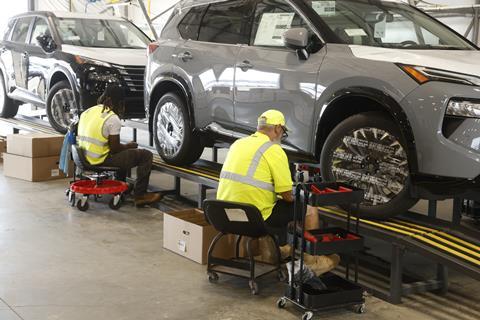
Nissan plans for growth
Wallenius Wilhelmsen’s VPC at Brunswick has the capacity to handle upwards of 180,000-200,00 units per year and it has seen some volume increases from units previously handled through Savannah. “We are currently on pace for 300 vessel calls in 2024,” says Mike Derby, senior vice-president of port, terminal and stevedoring operations in the Americas for Wallenius.
As mentioned, Wallenius Wilhelmsen has added three new buildings to support vehicle processing for Nissan North America. The carmaker moved to the Colonel’s Island terminal in 2022 and is already one of the top five vehicle makers by volume based there. The three new buildings, managed by Wallenius Wilhelmsen, are processing Nissan and Infiniti brand vehicles. They include imports of the Nissan Ariya, Armada, Kicks, Sentra and Versa, as well as the Infiniti QX80. Nissan also uses the new facilities at Colonel’s Island terminal to export the Nissan Altima and Pathfinder.
Nissan says planned equipment at the new buildings includes ramps, lifts, lighting and a crossdock for parts storage, tooling for accessory installation, as well as a fumigation warehouse for exports to Australia.
“The footprint is much more efficient for the flow of vehicles to trucks and rail services,” says Chris Styles, vice-president, supply chain management for Nissan North America. “We also plan for additional capacity to be added, along with a fourth berth, in 2027.”
“The footprint is much more efficient for the flow of vehicles to trucks and rail services. We also plan for additional capacity to be added, along with a fourth berth, in 2027” – Chris Styles, Nissan North America
That greater efficiency gained from berth to processing and vice versa is also more sustainable and supported by charging infrastructure at each new building.
Around 60,000 Nissan and Infiniti vehicles were processed at Brunswick in 2023, and so far this year the carmaker has processed about 30,000 vehicles (as of the beginning of August).
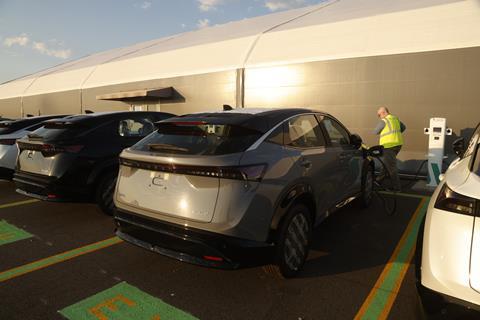
“We forecast that approximately 60,000 units will be processed at Brunswick by Nissan Group for the next couple of years,” says Styles.
Wallenius Wilhelmsen provides Nissan with services that include vehicle processing from ocean vessel to port, inland connectivity, vehicle accessory installation, inspection and quality, and EV charging.
“The services are overall the same with a purpose-built facility dedicated to Nissan Group and the scope of EV charging has been increased,” says Styles.
Alongside Nissan, Wallenius Wilhelmsen is providing services for other carmakers. “While the expansion does create additional capacity, we have a strong existing customer base in Brunswick of OEMs who are looking to import their vehicles to the US south-east. This includes new OEMs, such as Ineos,” says Ted Boudalis, vice-president of automotive processing for US ports at the logistics provider.
Working with TransDevelopment and Wallenius Wilhelmsen, GPA has completed a 18,580 sq.m fumigation warehouse adjacent to the dock at Colonel’s Island for the fast and efficient treatment of vehicles destined for Oceania. That facility has been built to accommodate Wallenius Wilhelmsen in its move into Brunswick port from Savannah, though GPA says that other auto processors are also able to use the fumigation warehouse.
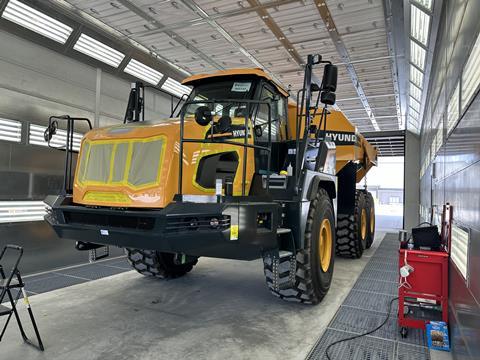
April-May 2024 volumes
April
75,869 automotive units
2,635 units of drivable machinery
2,096 units of static machinery/boats
Total: 80,600
May
77,605 automotive units
4,299 units of drivable machinery
4,673 units of static machinery/boats
Total: 86,577
High and heavy investment
Three warehouses, each around 9,300 sq.m and used for fitting components onto high and heavy equipment, have also been completed. The high and heavy processing is carried out by Keen, which Wallenius Wilhelmsen bought in 2017. Work has also been completed on a 14,00 sq.m on-dock warehouse for crated machinery that cannot be stored outside, such as machinery with exposed electronics.

“What is unique about the new EPC is that it will allow us to provide complex assembly and customisation work beyond what is typically associated with an on-port environment,” says Mike Rye, senior vice-president for high and heavy services in the Americas for Wallenius Wilhelmsen. Rye says the work done at the port on the machinery services allowed OEMs to have their products customised and completed closer to market. “Our customers’ machines are being worked on in factory-like conditions, and the on-port locations allows for machines to easily be distributed to dealers, end-users and job sites throughout the southeast.”
TransDevelopment has assisted Wallenius Wilhelmsen with the design and build of processing facilities throughout the country over many years, including the new facilities in Brunswick, according to Mike Derby. The terminal, VPC and EPC are open and operational, with additional capabilities coming online over the course of the year.
“Wallenius Wilhelmsen had been operating out of Brunswick prior to the GPA’s decision to consolidate ro-ro operations in Brunswick and container operations in Savannah,” says Derby. “The expansion includes work to the existing marine terminal and vehicle processing centre, as well as a newly built equipment processing facility for construction, mining and agricultural OEMs and their dealers. With an expanded VPC, on-terminal fumigation facility, and newly developed EPC capabilities, Brunswick can serve as a multi-user and multi-segment ro-ro hub.”
“The expansion includes work to the existing marine terminal and vehicle processing centre, as well as a newly built equipment processing facility for construction, mining and agricultural OEMs and their dealers” – Mike Derby, Wallenius Wilhelmsen
GPA reports that in addition more than 48 hectares have been developed, including roller-compacted concrete and heavy-duty asphalt for oversized and high and heavy cargo, and there is a further 120+ hectares available for expansion.
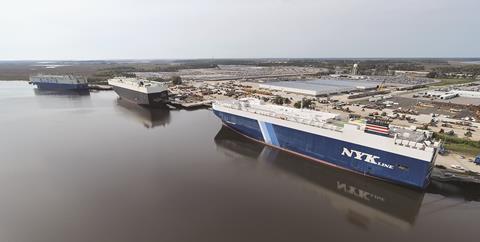
Ongoing expansion
In terms of ongoing work, GPA is widening the access road from the dock to the south side of Colonel’s Island Terminal to allow for the unimpeded transport of high and heavy cargo. Completion is due later this year.
Construction on a second rail yard on Colonel’s Island starts this year and the additional rail tracks will improve Brunswick’s capacity to serve inland markets, according to the GPA.
The development of a fourth berth, which is currently in the engineering phase, will also more efficiently accommodate modern vessels capable of carrying 7,000-plus vehicles, according to Kuzma.
Mike Hynekamp, chief operating officer of logistics services at Wallenius Wilhelmsen, said earlier this year that the facilities will allow it to work on its customers’ products in “factory-like conditions that stand above any on-port setting”.
Federal funds for Brunswick harbour improvements
$38m in federal funding has been allocated for maintenance dredging and harbour improvements:
- $26.6m to dredge the federal waterway to its full authorised depth
Dredging work in Brunswick’s inner harbour starting in late fall of 2024
Outer harbour dredging will begin in December 2024 - $11.35m federal allocation for the Brunswick Harbour Improvements project
Another $6m coming from the state of Georgia - Harbour improvement plan includes:
Expanded area for vessels to pass each other at St. Simons Sound
Bend widener
Expansion of the turning basin where ships are turned bow-downriver before docking at Colonel’s Island.
Improvements will take around a year to complete after the Corps of Engineers awards a contract for the work this year (2024)

























![Global[1]](https://d3n5uof8vony13.cloudfront.net/Pictures/web/a/d/s/global1_726550.svgz)

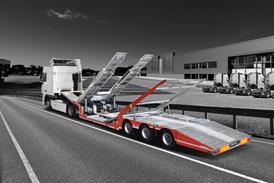


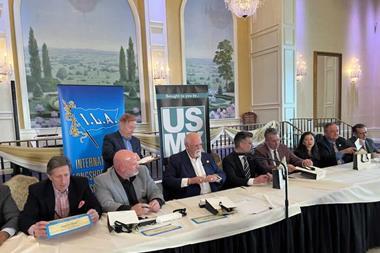



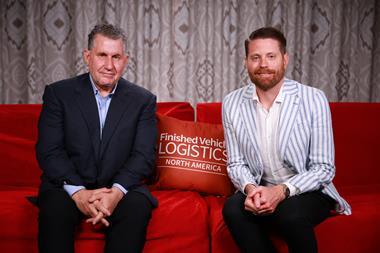
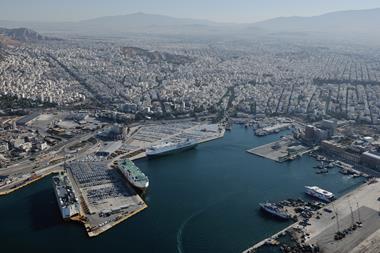



No comments yet